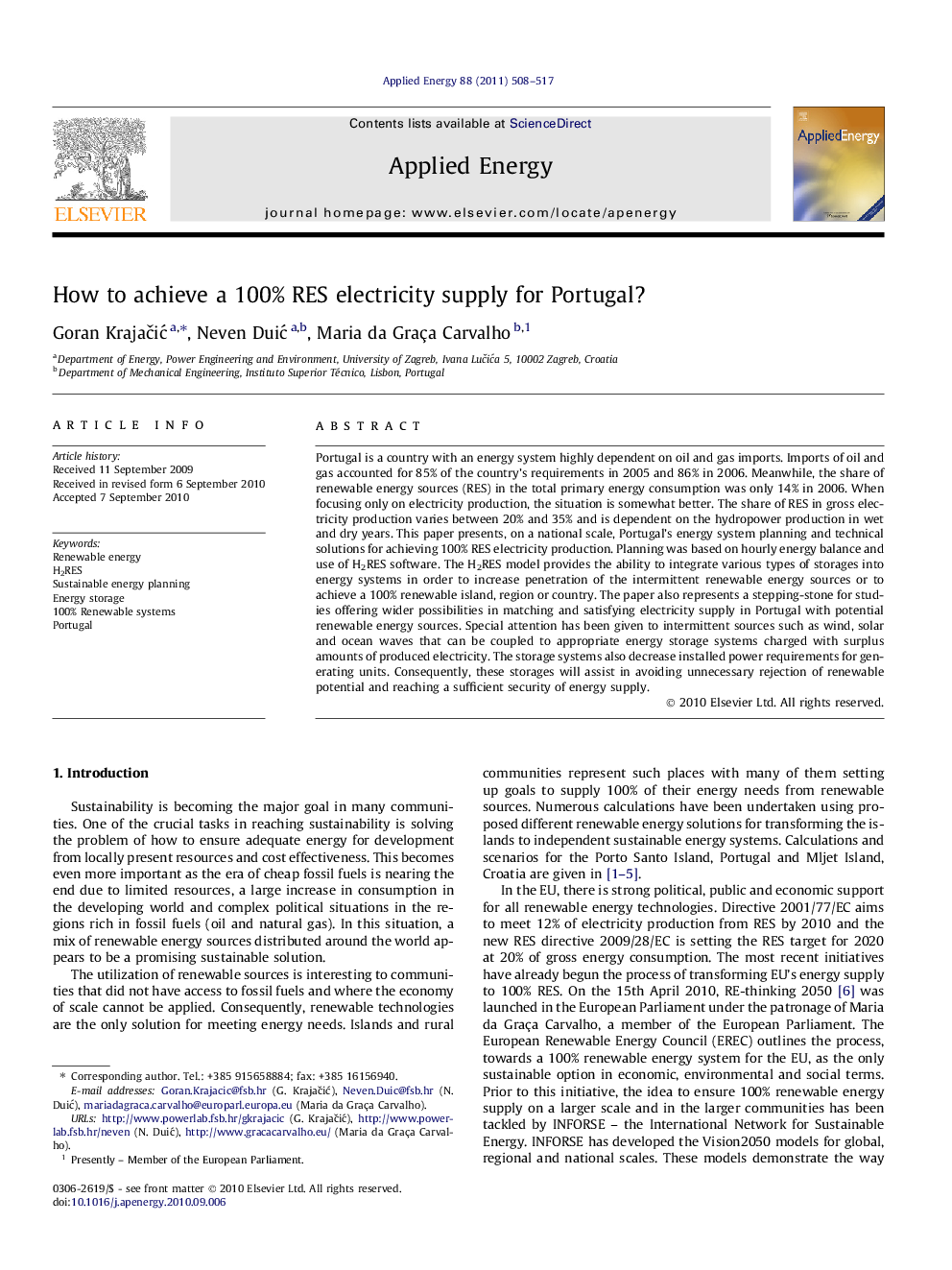| کد مقاله | کد نشریه | سال انتشار | مقاله انگلیسی | نسخه تمام متن |
|---|---|---|---|---|
| 244374 | 501948 | 2011 | 10 صفحه PDF | دانلود رایگان |

Portugal is a country with an energy system highly dependent on oil and gas imports. Imports of oil and gas accounted for 85% of the country’s requirements in 2005 and 86% in 2006. Meanwhile, the share of renewable energy sources (RES) in the total primary energy consumption was only 14% in 2006. When focusing only on electricity production, the situation is somewhat better. The share of RES in gross electricity production varies between 20% and 35% and is dependent on the hydropower production in wet and dry years. This paper presents, on a national scale, Portugal’s energy system planning and technical solutions for achieving 100% RES electricity production. Planning was based on hourly energy balance and use of H2RES software. The H2RES model provides the ability to integrate various types of storages into energy systems in order to increase penetration of the intermittent renewable energy sources or to achieve a 100% renewable island, region or country. The paper also represents a stepping-stone for studies offering wider possibilities in matching and satisfying electricity supply in Portugal with potential renewable energy sources. Special attention has been given to intermittent sources such as wind, solar and ocean waves that can be coupled to appropriate energy storage systems charged with surplus amounts of produced electricity. The storage systems also decrease installed power requirements for generating units. Consequently, these storages will assist in avoiding unnecessary rejection of renewable potential and reaching a sufficient security of energy supply.
Journal: Applied Energy - Volume 88, Issue 2, February 2011, Pages 508–517